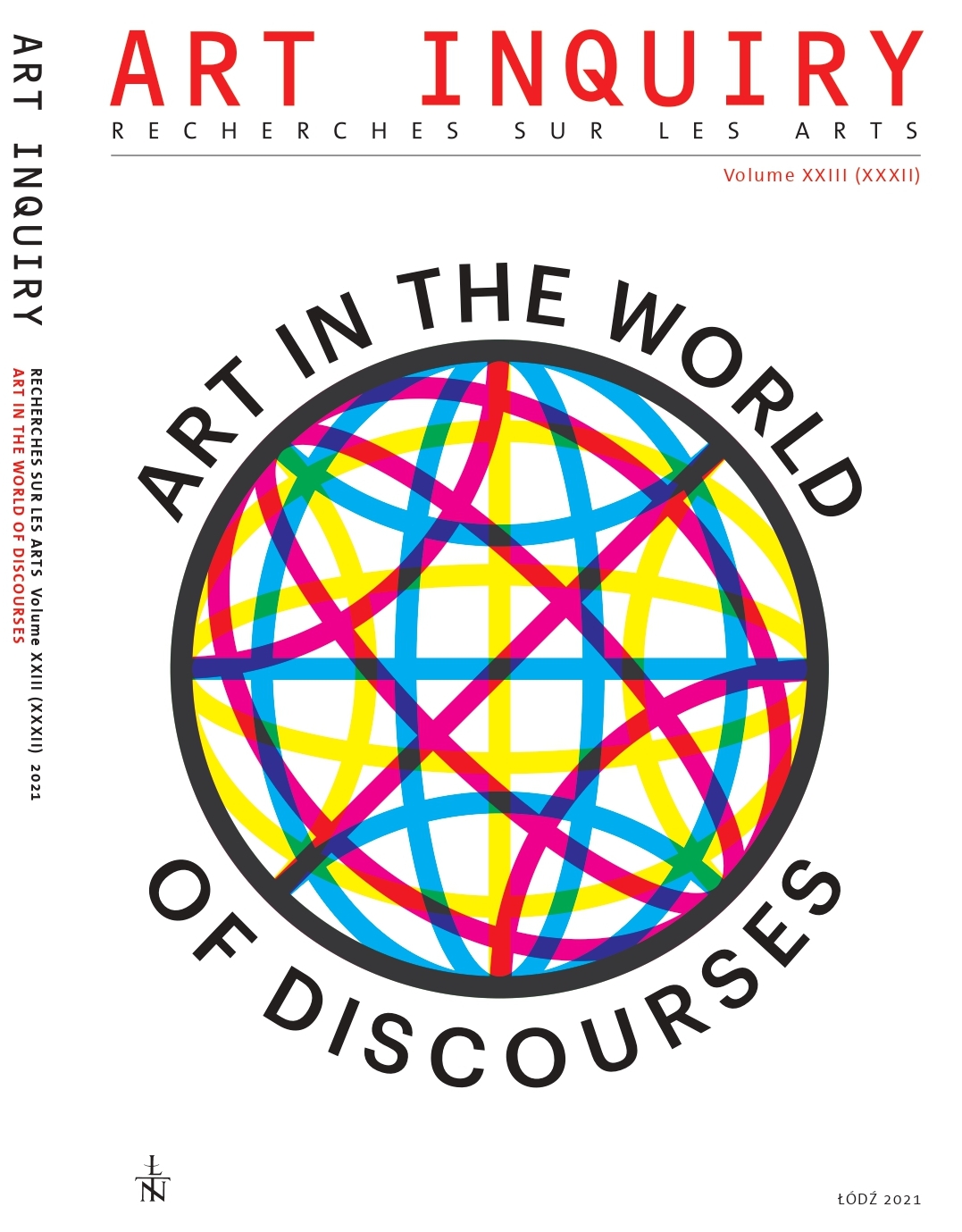Rodzaje interaktywności a performatywność
DOI:
https://doi.org/10.26485/AI/2021/23/5Słowa kluczowe:
sztuka interaktywna, performatywność, dialog, relacyjność, negocjacjaAbstrakt
Celem artykułu jest pokazanie jednego z trendów w sztuce współczesnej wynikającego z rozwoju interaktywności, z uwzględnieniem idącej za tym performatywności. Interaktywność potraktowana jest tu metodologicznie, jako różnorodnie chrakteryzująca dzieła sztuki, przez co mówimy o strukturze interaktywnej, a performatywność traktowana jest jakościowo, jako dotycząca przebiegu doświadczenia estetycznego, np. ze względu na rozpoznanie treści zawartych w danym dziele sztuki. Te dwa wskazane procesy mają pokazać na czym polega podmiotowo-przedmiotowy charakter interakcji z dziełem sztuki, co stwarza sytuację dialogu i możliwość podjęcia wzajemnej negocjacji odbiorcy i dzieła. Dialog ten kształtowany jest specyfiką interaktywnej struktury, przygotowanej w procesie twórczym do ekspresji zamierzonych przez artystkę/artystę treści. Może mieć on osobisty wymiar, ale może również dotyczyć np. gorących spraw politycznych lub społecznych oraz może wiązać się z szeroko rozumianą kulturą, przy czym zawsze dialog ten będzie zachowywał walor poznawczy.
Bibliografia
Ahmed Salah Uddin (2018) Interaction and Interactivity: In the Context of Digital Interactive Art. Installation, [in]: M. Kurosu, ed., Human-Computer Interaction. Interaction in Context, 20th International Conference, HCI International 2018, Las Vegas, Proceedings, Part II, Springer, pp. 241-257, DOI: https://doi.org/10.7238/a.v0i16.2744
Algorithmic Justice League (2016): https://www.ajl.org/
Be Water by Hong Kongers: https://www.bewater.digital/
Bourriaud Nicolas (2002) Relational Aesthetics, transl. Simon Pleasance & Fronza Woods, Les presses du réel, Dijon.
Brown Kathryn, ed. (2014) Interactive Contemporary Art: Participation in Practice, I. B. Tauris, London.
Courchesne Luc (1990) Portrait One, ZKM – Centre for Art and Media, Karlsruhe: http://www.medienkunstnetz.de/works/portrait-one/
Glowiak Maciej, Jaskiewicz Maciej, Nowak Leszek, Raszewski Wojciech, Skorupa Jan, Skotarczak Eryk (2019) Immersify: Immersive Ambisonic Audio: https://ars.electronica.art/outofthebox/de/immersive-audio/
Klingemanna Mario: https://onkaos.com/mario-klingemann/
Leopoldseder Hannes, Schopf Christine, Stocker Gerfried (2018) CyberArts – Prix Ars Electronica 2018, Hatje Cantz, Berlin-Linz.
Leopoldseder Hannes, Schopf Christine, Stocker Gerfried (2019) CyberArts – Prix Ars Electronica 2019, Hatje Cantz, Berlin-Linz: https://ars.electronica.art/outofthebox/files/2019/08/cyberarts2019.pdf
Matsuda Masahide (2016) Sazae Bot (2010-2017) – Anonism, article downloaded from: https://www.masahidematsuda.com/sazaebot
McCarthy Lauren Lee (2019) Someone: https://lauren-mccarthy.com/
McWharter Kristin (2017) Conspiracy: Conjoining the Virtual https://kristinmcwharter.com/conspire/
Ożóg Maciej (2009) Authorial Strategies in Interactive Art, [in:] A. Porczak, ed. Interactive Media Arts, Academy of Fine Arts in Kraków, pp. 69-88.
Saint Machine: https://saintmachine.ro/portfolio/i-human/
Saltz David Z. (1997) The Art of Interaction: Interactivity, Performativity, and Computers, “The Journal of Aesthetics and Art Criticism” (Perspectives on the Arts and Technology), The American Society for Aesthetics, Denver, Vol. 55, No. 2, pp. 117-127, DOI: https://doi.org/10.2307/431258
Soler-Adillon Joan (2015) The intangible material of interactive art: agency, behavior and emergence, “Artnodes – E- Journal on Art, Science and Technology”, Universitat Oberta de Catalunya, Barcelona, no. 16, pp. 43-52, DOI: https://doi.org/10.7238/a.v0i16.2744
Sztabiński Grzegorz (2018) Art, Participation and Aesthetics, “Art Inquiry. Recherches sur les arts – Participation in Art”, Łódzkie Towarzystwo Naukowe, Łódź, vol. XX (XXIX), DOI: https://doi.org/10.26485/AI/2018/20/3
Vicente Ana Teresa (2017) Wandering Gaze: http://anateresavicente.com/index.php/wandering-gaze/



